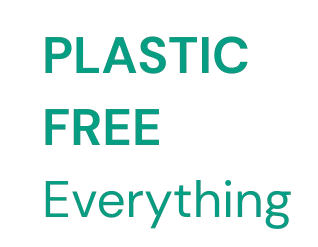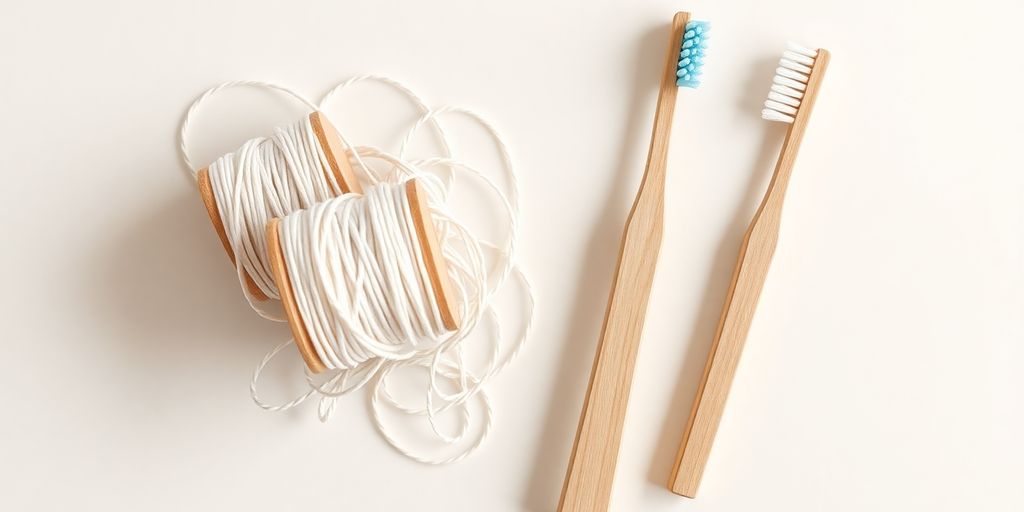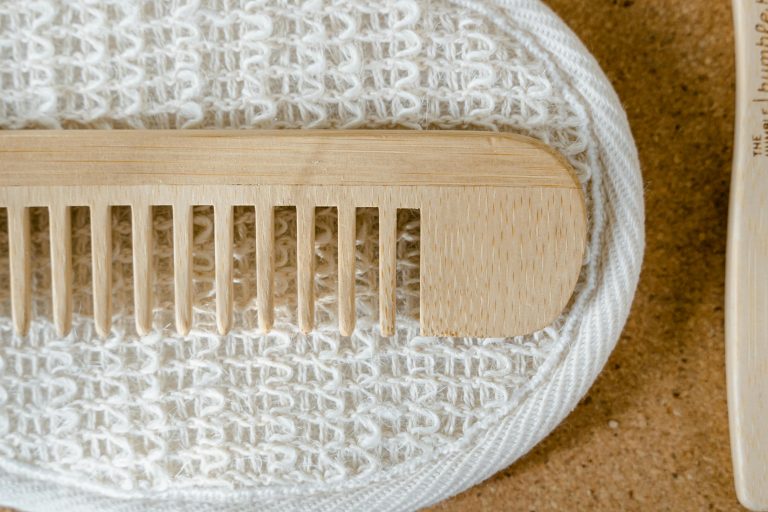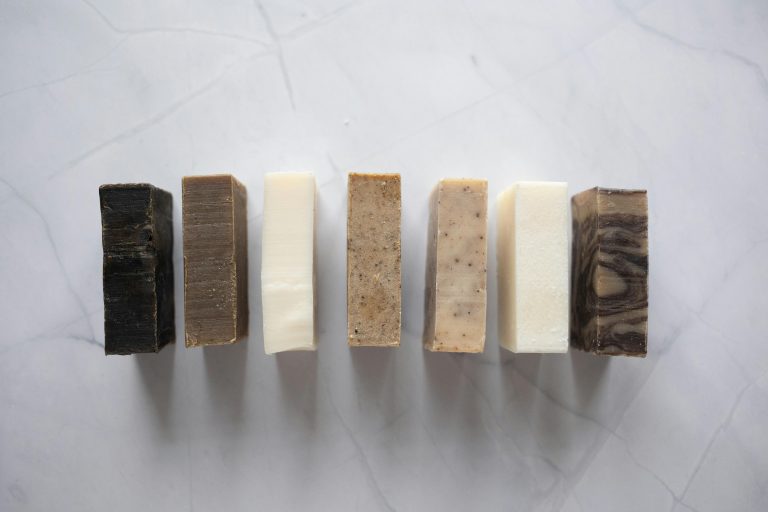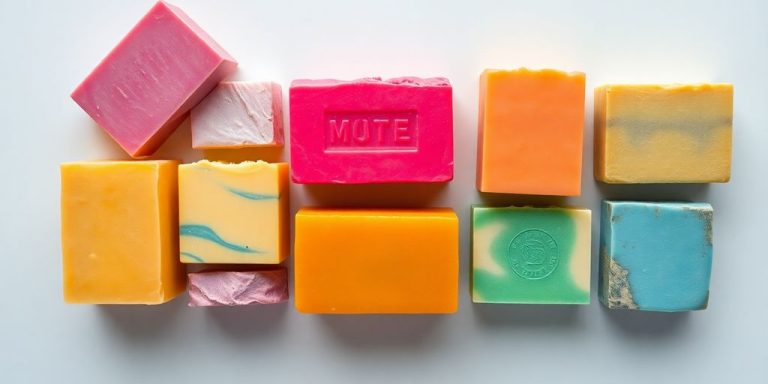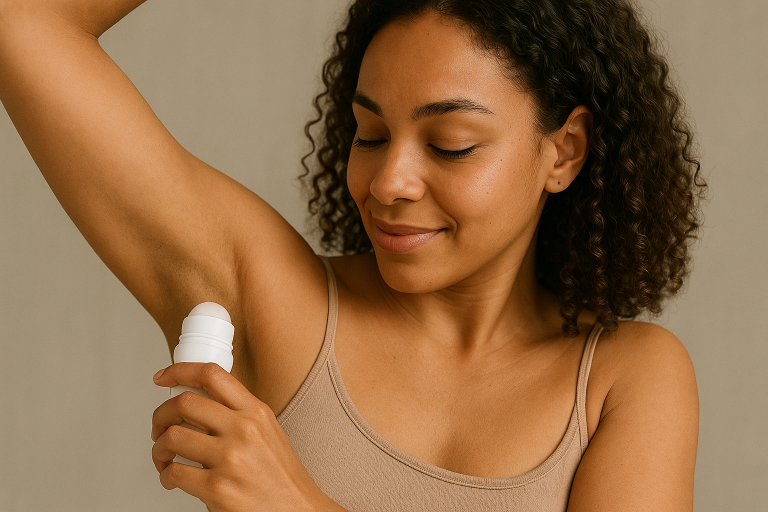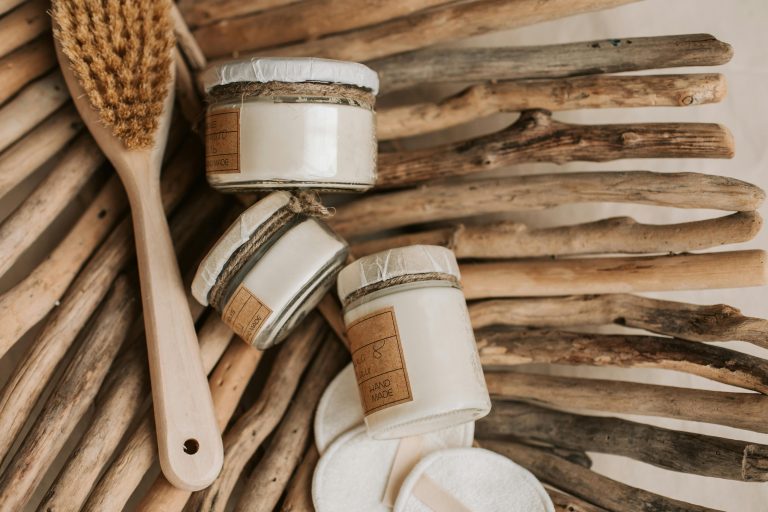The Best Plastic Free Dental Floss Ranked
Making the switch to plastic-free floss is a simple yet impactful way to reduce waste. Many household brand name floss options often comes in plastic containers and is made from toxic materials like Teflon and PFAS, contributing to both plastic pollution and harming your health.
Thankfully, there are now many brands offering safe, effective and eco-friendly alternatives. This guide looks at some of the best plastic-free floss options available, helping you keep your smile bright and the planet a little cleaner.
Quick Roundup + Table of Contents
Here is our rank of top plastic free dental floss

Making the switch to a more sustainable oral care routine can feel like a big undertaking, but small changes can make a significant difference. One simple yet impactful swap is choosing a plastic-free dental floss. Thankfully, there are now excellent alternatives available that are kind to both your teeth and the planet. We’ve explored several options to bring you a ranked list of the best non-plastic dental floss choices.
Our Favorite Floss: Mother Earth Bamboo Charcoal Dental Floss
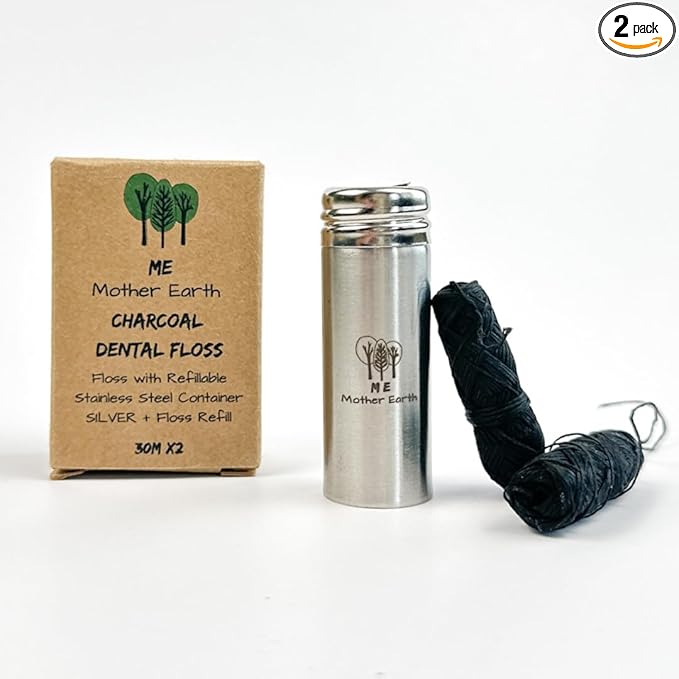
An affordable, plastic free dental floss that comes in minimalist packaging, Mother Earth’s Bamboo Charcoal Dental Floss is our recommended plastic free dental floss option.
The floss is also biodegradable and compostable, making it an excellent choice for the eco-conscious consumer. The packaging is equally sustainable, featuring a reusable glass dispenser and compostable refill pouches.
If you’ve got dental challenges—tight teeth, sharp edges that break floss (even at the dentist), an implant that traps food, receding gums, or sensitivity around a crown—switching from your go-to floss can feel risky. Especially if you’ve relied on something like Glide for years. But if you’re thinking about trying a zero-waste, plastic-free floss, I can tell you: it’s worth it.
This floss performs better across the board. It’s about the same thickness as Glide, just a bit less waxy—which actually helps lift away tartar and stains more effectively. It slides comfortably between tight teeth, feels gentler on sensitive spots, and holds up even where other flosses break. You’ll likely find it cleans tricky areas—like under an implant—in just one or two passes instead of five or six.
And the best part? You might actually start enjoying flossing. What used to be a painful, frustrating chore now feels like a small act of self-care that leaves your mouth truly clean.
Plus, the eco-friendly packaging feels great to use. No plastic, and the container is compostable—just don’t be surprised if you have to remind yourself not to toss it in the trash at first. Once you make the switch, you may never go back.
Features:
- Material: Bamboo
- Vegan: Yes
- PFAS Free: Yes
- Plastic Free: Yes
- Reusable and Refillable: Yes
- Cost Per Foot: $0.06 per foot.
Better & Better Natural Floss – Plant Based Nylon
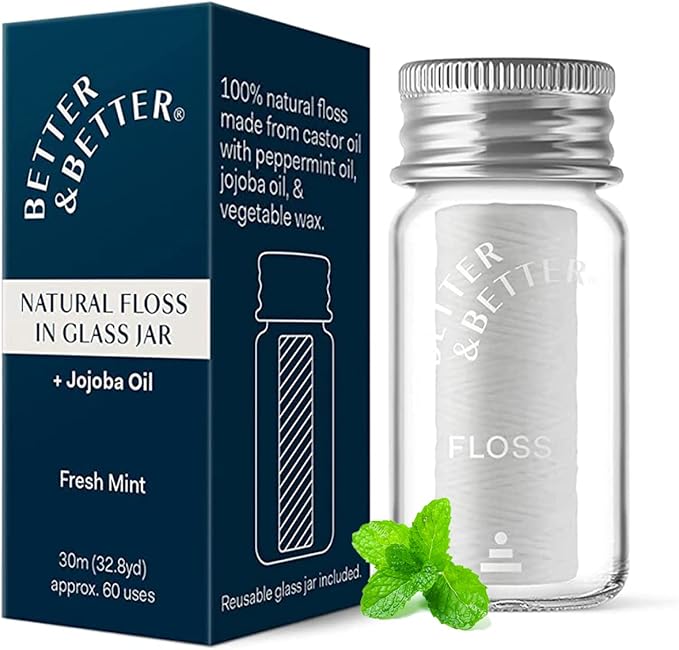
What I love about this floss is how well it works thanks to the stretchiness of the cotton. When you pull it tight, it gets thin enough to slide easily between even tightly spaced teeth, and yes, it’s strong enough to handle that. Then when you ease up, the floss expands just a bit and acts like a tiny washcloth, gently cleaning the entire space. It doesn’t shred like plastic floss, and it feels so much more natural and kind to your gums unlike dragging what’s basically fishing line through your mouth.
I also really appreciate that it’s plastic-free and comes in a glass jar. With so much plastic already polluting our oceans and landfills, every swap like this matters. The jar itself isn’t fragile unless you drop it on a tile floor, and I actually don’t use the little metal cutter on the cap. I just keep a small pair of scissors in the cabinet. It’s easy to pull out exactly what I need and leave a bit sticking out for next time. Plus, I love that I can see how much floss is left so I never run out unexpectedly. All around, just a beautiful, thoughtfully made product.
Features:
- Material: Plant Based Nylon (derived from corn & sugarcane)
- Vegan: Yes
- PFAS Free: Yes
- Plastic Free: Yes
- Reusable and Refillable: Yes
- Cost Per Foot: $0.13 per foot.
Eco Roots Natural Bamboo Dental Floss
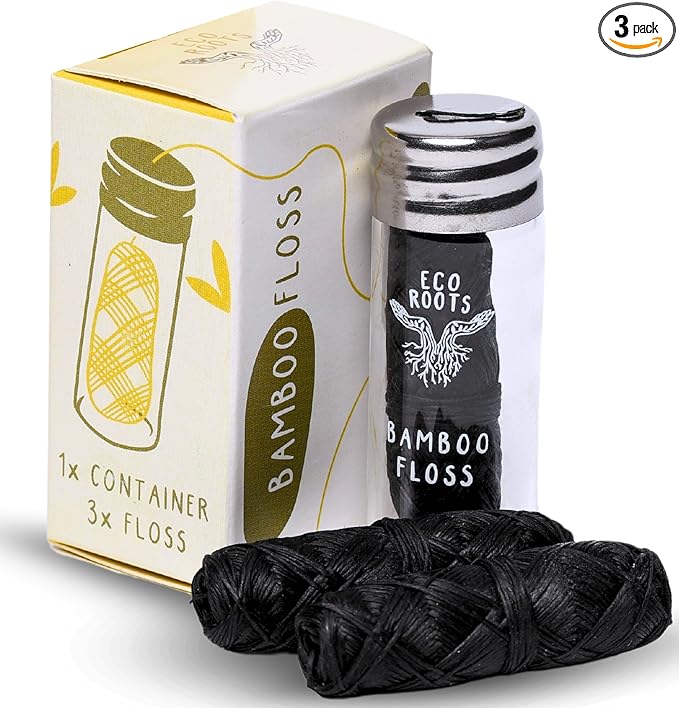
This plastic-free, plant-based dental floss is great for people who care about sustainability without sacrificing performance.
I’ve tried a lot of dental floss over the years, but this plastic-free, plant-based option has completely won me over. Not only is it biodegradable and zero-waste, but it actually performs better than most conventional floss I’ve used. It’s strong, slightly textured, and works great between tight teeth, even around my sensitive spots and tricky areas like an implant. I love the subtle mint flavor, and the compact, refillable glass container looks great on my bathroom counter.
At first, I was nervous about switching from my usual floss, but I’m so glad I did. This one doesn’t shred, doesn’t slip when wet, and is surprisingly gentle on my gums. I’ve even found that it removes plaque and stains more effectively. The only downside is that the glass container can break if you drop it, but that’s easy to avoid with a little care or you can use a metal case if you’re worried. Overall, I feel good knowing I’m avoiding microplastics and making a more sustainable choice. I’m officially a convert.
Features:
- Material: Bamboo
- Vegan: Yes
- PFAS Free: Yes
- Plastic Free: Yes
- Reusable and Refillable: Yes
- Cost Per Foot: $0.06 per foot.
TreeBird Biodegradable Dental Floss
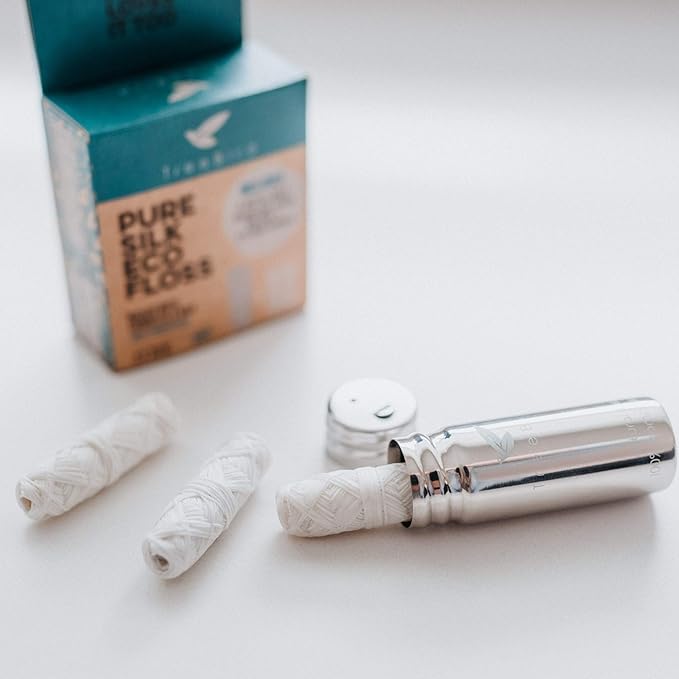
This silk floss has clear environmental and health benefits over plastic floss, but it’s definitely less durable. When I first started using it, I broke it every time I flossed—it was frustrating and felt wasteful. To be fair, my teeth are closely spaced, which made the problem worse. But after five months, I’ve found two simple changes that make it work really well.
First, silk floss is strong lengthwise but weaker across its width. So instead of pulling it out at an angle (which can catch on sharp tooth edges), I pull it straight up. If it gets stuck, I release one end and gently pull it out sideways. Unlike plastic floss, the silk doesn’t slip off my fingers when wet, which helps a lot.
Second, because it tends to fray with use—especially if you saw back and forth—I switch to a fresh section of floss after each quadrant. It uses a bit more floss, but it prevents breakage.
These changes took some getting used to, but they’re second nature now. I still occasionally snap a piece, but maybe once a month instead of every day. A small tradeoff for avoiding PFAS and microplastics.
Features:
- Material: Compostable Silk
- Vegan: Not Listed
- PFAS Free: Yes
- Plastic Free: Yes
- Reusable and Refillable: Yes
- Cost Per Foot: $0.02 per foot.
Dental Lace Woven PTFE & PFAS Free Dental Floss Floss
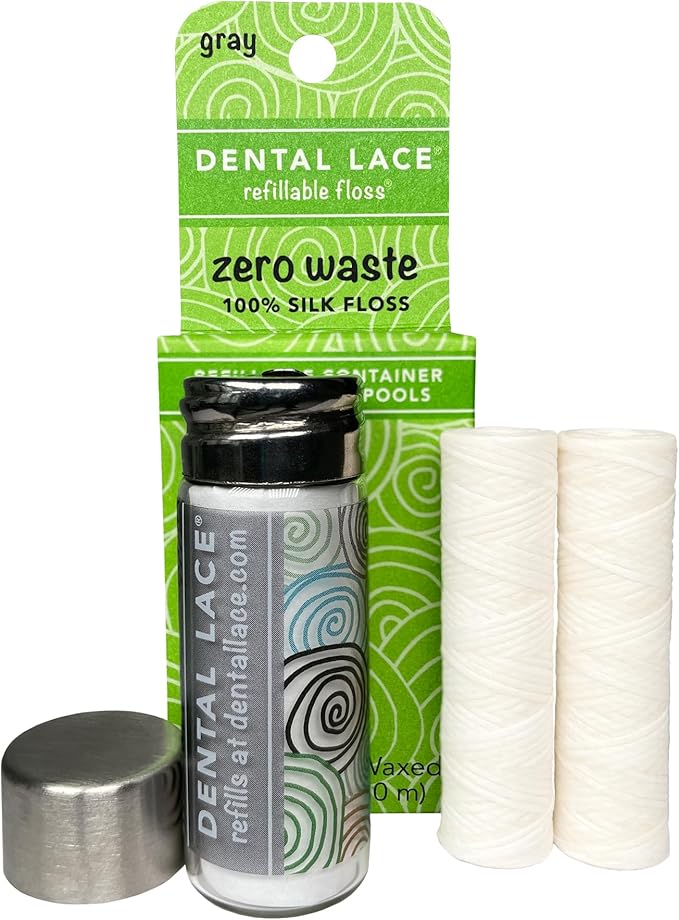
I love that this product is plastic free and PFAS free, and it comes in zero waste packaging with a refillable container.
From a PFE standpoint it checks all the boxes I’m looking for.
That being said, I did have a hard time with this floss as my teeth are very close together, and it kept breaking when using it.
For those of you who have narrow teeth, a bamboo floss option is going to be superior.
Features:
- Material: 100% Natural Silk
- Vegan: No Listed
- PFAS Free: Yes
- Plastic Free: Yes
- Reusable and Refillable: Yes
- Cost Per Foot: $0.06 per foot.
How Dental Floss Contributes to Microplastic Pollution

It might surprise you to learn that your daily dental floss habit contributes to a much larger environmental issue: microplastic pollution. Most conventional dental floss is made from nylon, a synthetic material derived from petroleum. When you use and discard this floss, it doesn’t simply disappear. Instead, it breaks down over time into tiny plastic fragments, or microplastics.
These microplastics can enter our waterways and oceans, posing a significant threat to marine life. Animals can ingest these particles, mistaking them for food, which can lead to internal injuries or starvation. They can also become entangled in the plastic debris. Furthermore, the plastic containers that hold most floss also add to the waste stream, as they are rarely recyclable.
The Breakdown of Nylon Floss
- Material: Typically made from nylon, a petroleum-based plastic. Also often coated with PFAS like Teflon.
- Degradation: Takes hundreds of years to decompose, breaking into microplastics.
- Environmental Impact: Contributes to plastic waste in landfills and waterways, harming wildlife.
Beyond Plastic: Chemical Concerns
Many floss brands also coat their nylon floss with chemicals like PFAS (per- and polyfluoroalkyl substances). These are often added to make the floss glide more easily between teeth. However, PFAS are known as “forever chemicals” because they don’t break down easily in the environment or the human body. Studies have linked PFAS exposure to various health issues, including impacts on metabolism, fertility, and immune function.
The presence of these chemicals in everyday products like dental floss highlights the need for greater transparency and the adoption of more sustainable alternatives in personal care routines.
Some Dental Floss Brands Contain Teflon and PFAS
It turns out that not all dental floss is created equal, and some common brands might contain ingredients you’d rather avoid. You might have heard of PFAS, sometimes called “forever chemicals.” These are a group of chemicals that don’t break down easily in the environment. Unfortunately, research has found that certain dental flosses, including some popular ones, contain these substances. For instance, studies have detected organic fluorine, which is a sign of PFAS, in flosses like Oral-B Glide. Other brands have also shown traces of these chemicals.
Why are PFAS in floss a concern?
PFAS have been linked to a number of health issues. These can include things like changes in metabolism, problems with fertility, slower growth in fetuses, and a higher chance of being overweight. They might also affect how well your immune system works and increase the risk of certain diseases.
What to look out for
When you’re picking out floss, it’s good to know what to avoid. Many conventional flosses are made from nylon, which is a petroleum-based material. Some flosses also use synthetic materials, artificial colors, or preservatives. It’s worth checking the ingredients list if you’re concerned about these.
- Nylon: Often derived from petroleum and can be a source of microplastics.
- PFAS (Perfluorinated Chemicals): Used to make floss glide easily, but they are persistent chemicals.
- Polyester: Another petroleum-derived material that contributes to microplastic pollution.
The presence of these chemicals in a product used daily inside your mouth is definitely something to consider for your overall well-being and environmental impact.
Thankfully, there are many brands that offer floss without these concerning chemicals. Looking for floss made from natural materials like silk or bamboo, and packaged in plastic-free containers, is a good way to go. Making informed choices about your oral care products can help reduce your exposure to potentially harmful substances and minimize your environmental footprint. Choosing PFAS-free dental floss is a step towards a healthier you and a cleaner planet.
Making the Switch to Plastic-Free Floss
So, we’ve looked at a bunch of different floss options that ditch the plastic. It’s clear that moving away from regular floss is a good idea for the planet. Many of these alternatives use materials like silk or bamboo, and they often come in packaging that’s much better for the environment. While finding a perfect, plastic-free floss that works for everyone might take a little trial and error, the effort is worth it. Even small changes, like switching your floss, add up to make a difference. It’s about making better choices where we can, and there are definitely good options out there now to help us do just that.
Frequently Asked Questions
What exactly is plastic-free dental floss?
Plastic-free dental floss is made from natural materials like silk, bamboo, or plant fibers. It’s better for the planet because it breaks down naturally and doesn’t leave plastic bits behind.
Why is regular plastic floss bad for the environment and my health?
Regular floss is often made from nylon or Teflon, which are plastics. When you throw it away, it can end up in landfills or oceans, hurting animals and polluting the environment. Plus, some floss has chemicals called PFAS, which aren’t good for your health.
How does using plastic-free floss help the environment?
Using floss made from silk or bamboo is a great way to cut down on plastic waste. Many brands also use eco-friendly packaging, like paper or glass containers, that you can reuse or recycle.
Is plastic-free floss biodegradable?
Yes, many plastic-free floss options are made from natural silk or plant-based materials and are completely biodegradable. This means they will break down naturally after you use them.
Are there any plastic-free floss options that are still made from petroleum?
Some dental floss brands might use materials like nylon, which comes from oil. While some types of nylon can break down, it’s still best to choose floss that is completely plastic-free if you want to avoid petroleum products.
What should I look for when buying plastic-free floss?
When picking out floss, look for descriptions that say it’s made from silk, bamboo, or other plant materials. Also, check that the packaging is recyclable or compostable. It’s also good to avoid floss that lists Teflon or PFAS as ingredients.
